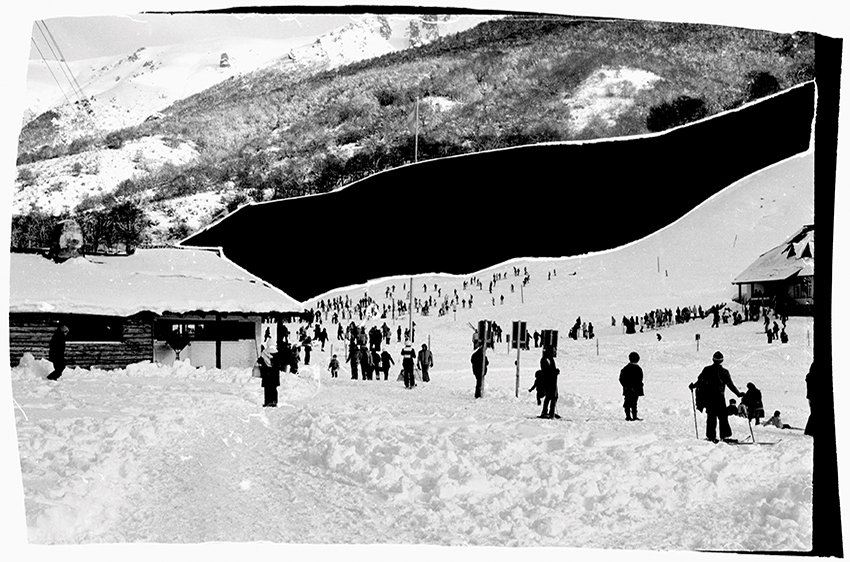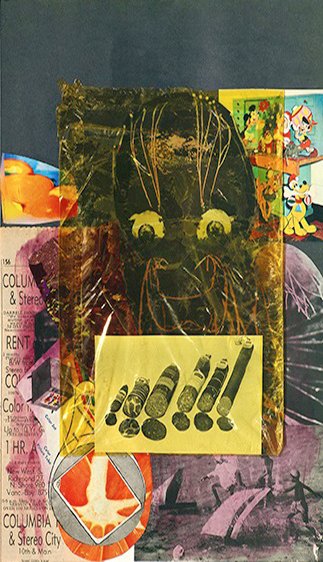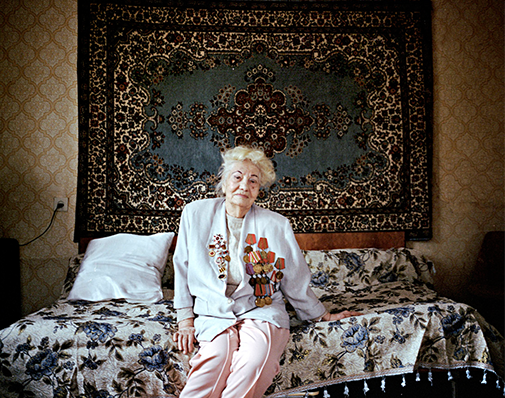Tom Wood, Not Miss New Brighton, 1978/79 © Tom Wood
England – In March, 2013, Emaho’s Editor-in-Chief Manik Katyal caught up with Brett Rogers, Curator of The Photographer’s Gallery in London, to unearth her global vision of photography.
Manik : Brett, you have been into curating for almost 30 years now. And you came from Australia. How did the process of curating begin for you?
Brett : In Australia during the 1970s I had to read at the University of Fine Arts because you couldn’t do any photography in those days. It was very very hard to find a place where one could study photography and research it. So in 1980 I decided to come to the UK to do my M.A. at The Courtauld Institute of London. When I arrived here I tried to investigate if there were any courses within The Courtauld that taught photography. Again nothing. In those days it was really very hard to find any taught M.A. courses in photography. So instead of doing something associated with photography, I did my thesis on surrealism and alluded to photography in my thesis. So I finished at The Courtauld, and previously I already had some experience working in Australia for four years, organizing exhibitions of art that toured the country. 
The Photographers’ Gallery at 16- 18 Ramillies Street, 2012 © Kate Elliott
Manik : As a curator?
Brett : Yes, I was very fortunate to be offered the first trainee exhibition officer job at the Australian Gallery Directors’ Council. They trained me for a year and I was sent around the world to work in places. I chose the places myself and I had to set it up all by myself. It was in the days when internships were quite rare, so I was quite unusual being this Australian girl at the Hirshhorn Museum in Washington and the Guggenheim. In London, I worked at the British Council as an intern. I learnt some skills that way, and then I went back to Australia and did six months in Australian galleries. I worked for the Australian Gallery Director’s Council for 4 years and then came to Britain. Very fortunately, soon after my M.A. I got a job at the British Council where I stayed for 20 years.
Manik : How was photography back in the day in Australia and when you first came to Britain?
Brett : In Australia, it was exactly like here. In the 70s when I started working for the Australian Gallery Directors’ Council it was booming. We started doing photography exhibitions because they were easy to tour, affordable and they attracted huge audiences. We were part of the boom of interesting photography that happened in the 70s in England and here in Australia, which recognized that photography was an important art form. I was very fortunate that I already had some experience in curating shows in Australia by the time I got here.
Manik : But there were not too many galleries here at that time. Were they?
Brett : No. There was one specialist photography gallery in Sydney called the Australian Centre for Photography. But the photography shows toured all the major galleries in Australia, like to the gallery in South Wales, Queenstown Art Gallery. So the bigger art galleries were beginning to take and accept photography as an art form.
Manik : And in London?
Brett : In London, it all happened in the 70s as well. The first major show was the Land exhibition at the V&A in 1971, and in 1972 at the National Portrait Gallery. The first photography auction took place at Sotheby’s in 1971. And this gallery, the National Portrait Gallery was founded in 1971. That’s the key year, when everybody suddenly realized that there was a market for photography. 
John Stezaker, Siren Song V, 2011 © Alex Delfanne
Manik : So you have seen it happen…when it was actually born?
Brett : Yeah. Yes. I am that old. (laughs)
Manik : When you were studying photography, were there a couple of images you’d like talk about, ones that really struck you?
Brett : In Australia, because I have never seen any historical 19th century photography, I was completely mesmerized by Fox Talbot and the people who began photography. My big dream was to come to Britain and see these wonderful historical works. Because it’s very true, especially with 19thcentury photographs, that you could look at them for all you like on a computer screen but when you see them in the flesh, and when you see these beautiful jewel-like objects on a piece of paper, that could disappear in a second..there is a magic about seeing a real object. So part of my journey to Britain, part of the reason I wanted to come was to be able to experience firsthand, those beautiful talismans of the beginning of photography, which I did. I was completely obsessed by historical photography for the first 10 years.
Manik : What images were these?
Brett : The Lattice Windowby Fox Talbert was one, as well as all the famous ones they found out outside the Lacock Abbey, all his seminal images that I saw in the flesh when I went down to the National Trust Gallery down in the Lacock Abbey, where he invented the positive-negative process. Coming back to London, I enjoyed everything I saw at the V&A, Francis Frith’s major travel photographs to the Pyramids in the 1870s-1880s. O Henry Peach Robinson’s composite photographs where he collaged together different people to create fictional narratives. Oscar Rejlander did the same and of course Julia Margaret Cameron because she was one of the very rare women photographers. I went all the way down to the Isle of Wight to see, to try and find her original photographs, but in those days nobody recognized her as an artist and you couldn’t see them.
Manik : As a curator, do you specifically work with any specific genre?
Brett : Not really. In the first ten years, I had success with historical photography. But even then, I was interested in contemporary art, contemporary photography. I was always working across the whole spectrum of photography. It’s been one of the pleasures of my curatorial life that I have not been constrained by any period or a time. I am interested in fashion photography and even advertising photography, as much as I am interested in the great artists of our time who used photography such as Jeff Wall and Cindy Sherman. So I’d like to believe that I have a very catholic approach to photography. 
John Stezaker, Muse (Film Portrait Collage) XVIII, 2012 © Alex Delfanne
Manik : You like to play around with the genre?
Brett : Yes. One of my meetings was with an artist who is best-known for the installation photos that he has taken of all the famous British artists’ work, from Damien Hirst to Rachel Whiteread. The way he has been able to transmit the power of their work through 3 dimensions is something, you know, I think that needs to be celebrated.
Manik : How closely do you work with the photographers?
Brett : Once they are selected for an exhibition here we do work very closely. We think about what would have the most dramatic impact and what is closest to the spirit of the project that they have worked on.
Manik : What’s the procedure for the selection of photographers?
Brett : We have a very broad framework in which we operate. In every 12-18 months, we have one solo show; we have a group show on a timely theme; we have one big show where we are awarding excellence in international photography, called the Deutsche Borse Photography Prize. We had once initiated a project to encourage younger talent called FreshFaced + WildEyed. And then we have one slot, two actually, that’s devoted to what we call ‘the quotidian’ – the everyday, the vernacular, fashion or advertising…the things that people tend to overlook and don’t tend to think of as high art in photography.
Manik : Is there any focus on Asian photographers?
Brett : We have been aware that our focus has been too Euro-centric and North American, and that’s been so because they have had wonderful education systems that have promoted and produced fantastic photographers. But going forward for the next seven years, I feel we really do need to refocus on the growing areas of Asia, Brazil, Russia, China and South America. We are trying to make sure that we visit those countries because some of my curators have never been outside of Europe. We want to access festivals and portfolio reviews, whenever we get an opportunity. For the first time ever, I am about to go to Beijing. How long ago did somebody from these areas exhibit? Well, you will be pleased to hear that one of our two opening shows was by an Indian collective, called the Raqs Media Collective and they showed an amazing image, a back projection of an image taken by a British photographer in 1905 of a surveyor’s office in India. They used technology to change the image…it was a loop on a loop and, over three minutes, they introduced contemporary elements to it. You had to watch very quietly and closely to see what things move because it was just the fan moving on the ceiling, and then somebody picked up the pen and wrote..one of the surveyors. You had to be very cognizant that you were watching a still image that sometimes moves . It was very disturbing..but a very interesting intervention by the Raqs Media Collective in making us see a fresh and historical image.

Geraldo de Barros, Untitled from the series Sobras, 1996-98 © Geraldo de Barros
Manik : Like you just said, the focus here is mostly on the British and North American photographers because they have had good education. Are you saying that there is not a decent level of education in Asia?
Brett : I would say that the infrastructure that you need to support the industry, and the profession of independent photography, needs to be in place. Then you need a gallery system– a commercial gallery system as well as a public gallery system. I can already see an independent photography network developing now in India.
Manik : Have your curators had a chance to explore the scene in countries in Japan, China, Bangladesh and many others?
Brett : They haven’t had the opportunity to go there much, but we had done many exhibitions from Japan and a few from China.
Manik : What are the steps that you are taking in terms of trying to explore the Asian photographic scene? It should be interesting for a western audience to explore the photography coming from Asian countries.
Brett : Ya exactly. We even have a big audience for that sort of photography here. So the next stage is to see as much as work as we can, and then see whether we are convinced if we can put it together in a way that will interest our audiences here. 
Claire Aho, From Cotton Rhapsody Catalogue, 1958 © JB
Manik : Have you been following the growth of documentary photography in Asia?
Brett : Only through the opportunities that we get when it comes to the UK or Europe. Ofcourse, as we discussed earlier, there was a very good show of Indian photography last year, and before that they showed us a very broad array of approaches to documentary photography We also had Raghubir Singh. We do admire his work.
Manik : What’s your personal philosophy as a curator?
Brett : Oh. I don’t have just one, because as representing an institution I have a responsibility to reflect the breadth of photography that’s happening in the world today, as also to reposition some historical figures who I feel are important for the younger generation to know and appreciate and understand. We have got too much choice, and actually trying to distill that for our audiences is the job of the gallery. At the moment we have three exhibitions, all related to the idea of photography and collage. And that’s one way to make sense of things..that we did photography and sculpture and the next year we will do photography and drawing. We will have a whole show, a whole gallery devoted to that. That’s what interests me, how do you try to pull together different ideas from different places and make sense of it for an audience which knows very little about the subject.
Manik : You have curated a lot of British photographers like Julia Margaret…
Brett : Cameron, Madame Yvonne…
Manik : So how’s the photography scene in Britain? How has been the evolution…
Brett : It had its heyday in the 19th century, then again it had this huge period in the 1920s and 1930s. You know the one thing about British photography is the view of immigrant who comes to Britain, sees it through different eyes, that has always has been a strong thing. People who were not born here tend to see this country in a much more critical and engaged vision than people who were born here. Then Britain went through another flowering of photography, a huge development in the 80s and 90s, when the British newcomers’ photography emerged with Martin Parr and his generation. And that was a wonderful time for me to be around doing an exhibition. 
Geraldo de Barros, Untitled from the series Sobras, 1996-98 © Geraldo de Barros
Manik : You travelled a lot?
Brett : Yeah. All over the world. Unfortunately, the British Council doesn’t have resources anymore to do that; there are not too many photography exhibitions, which breaks my heart. They are not extending the collection. It’s quite hard to tell what direction photography is heading in because there are so many positions that are interesting ,and so much is influenced by digital and the power of the networked image, that its very hard to pinpoint exactly where we are going. I would say that people who have come out of British art schools are at the cutting edge of what’s interesting but there also a whole lot of interesting artists in Europe and America. It’s hard to say whether British photography right now is the most interesting. Everything is global you know. Everything’s so much more globalized. It’s not so nationalistic anymore; you can’t pinpoint one thing that’s happening in Britain that’s distinct. What interests British photographers is usually what interests Indian and Asian photographers too.
Manik : In your gallery space, do you also try and promote the local photography scene?
Brett : Yes.
Manik : Or is it mostly, ‘If you are interesting we will promote you, we do not have any specifications’?
Brett : We have to be cognizant that we are a British gallery. So part of our program has to show British artists.
Manik : Last question, after curating so many photographers, what has been the whole personal experience? What is it that you personally enjoy?
Brett : I enjoy getting to know a photographer and understanding what’s drawn her into that particular subject and why she has chosen to produce the work in a certain way. [Shows the work] 
© Cristina de Middel, from the series , The Afronauts
Here’s the lady who got nominated for Deutsche Borse this year and you know we had never heard of her before and we just opened this book…and you read these things by the way. [still seeing the book] Director from the Ministry….this tells the story of how in Zambia in the 1960s there was a plan to compete with Russia and America and put men on the moon.
Manik : What? [laughs]
Brett : It really was. But they never really went ahead.
Manik : So did you guys exhibit this work?
Brett : …it needs the balance.
Manik : Yeah. And you have curated a lot of British photographers like Julia Margaret, Madame…
Brett : It’s about to be exhibited, next month. This artist has made a book about what would have happened? 
Roy Arden, TV, 2011 © Roy Arden
Manik : That’s really intriguing.
Brett : Isn’t that beautiful? The whole thing? Her grandmother made the costumes. That’s a light bulb..that’s a light covering.
Manik : Wow!
Brett : So that was 1964, that was the real map. They did go some way according to this plan but they never finished it because they realized that it was going to cost too much. Isn’t that wonderful?
Manik : Brilliant!
Brett : Crazy! And the photographs too are so beautiful.
Manik : And who is this photographer? Is she a young photographer?
Brett : Yes. Cristina de Middel. She is Spanish; she lives in London. It’s called the Afronauts.
Manik : Do you as a curator visit a lot of festivals in Europe?
Brett : I do, but there’s also China. Brazil has an incredible energy– you can just feel that photography there is at an exciting point of development. So you know that you need to go there to look at things that could be exciting. 
Adam Broomberg and Oliver Chanarin, Plate 23, 2011 Aircraft, at right, is seen as it is about to fly into the World Trade Center in New York on Tuesday. The aircraft was the second to fly into the tower Tuesday morning, 2011. http://www.forrestmarketing.com/worldtradecenters/attack.html
Photography Interviewed by Manik Katyal













